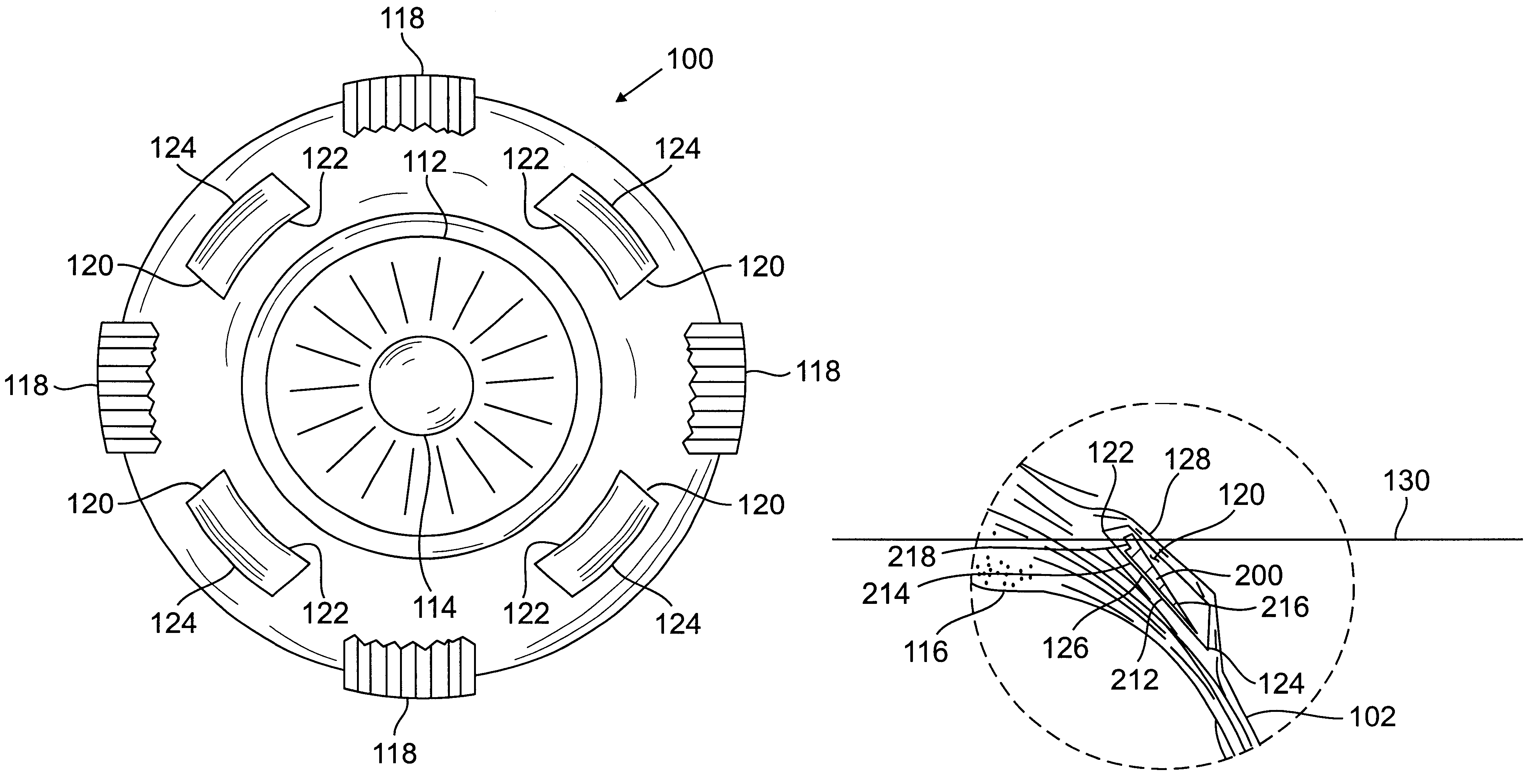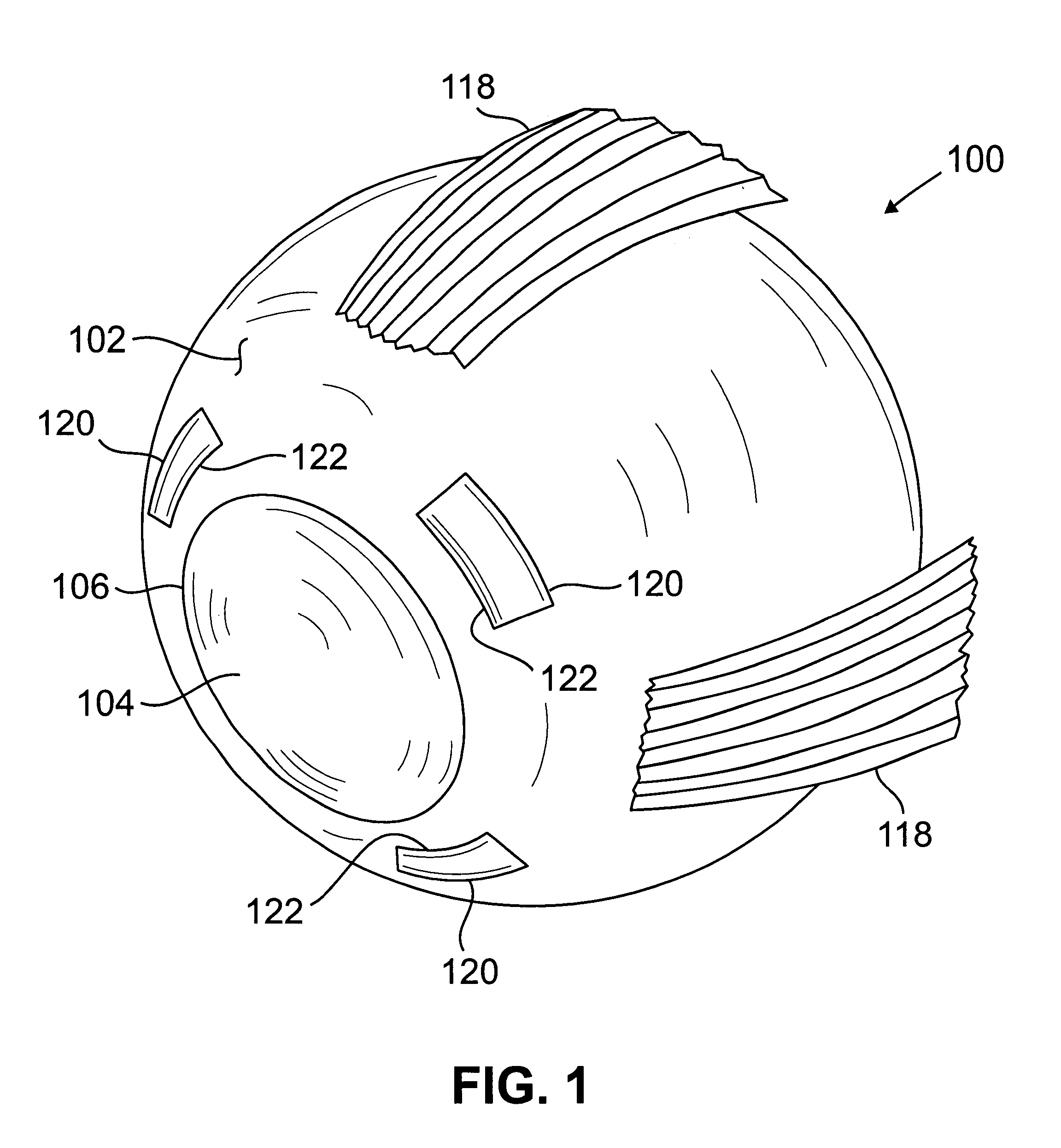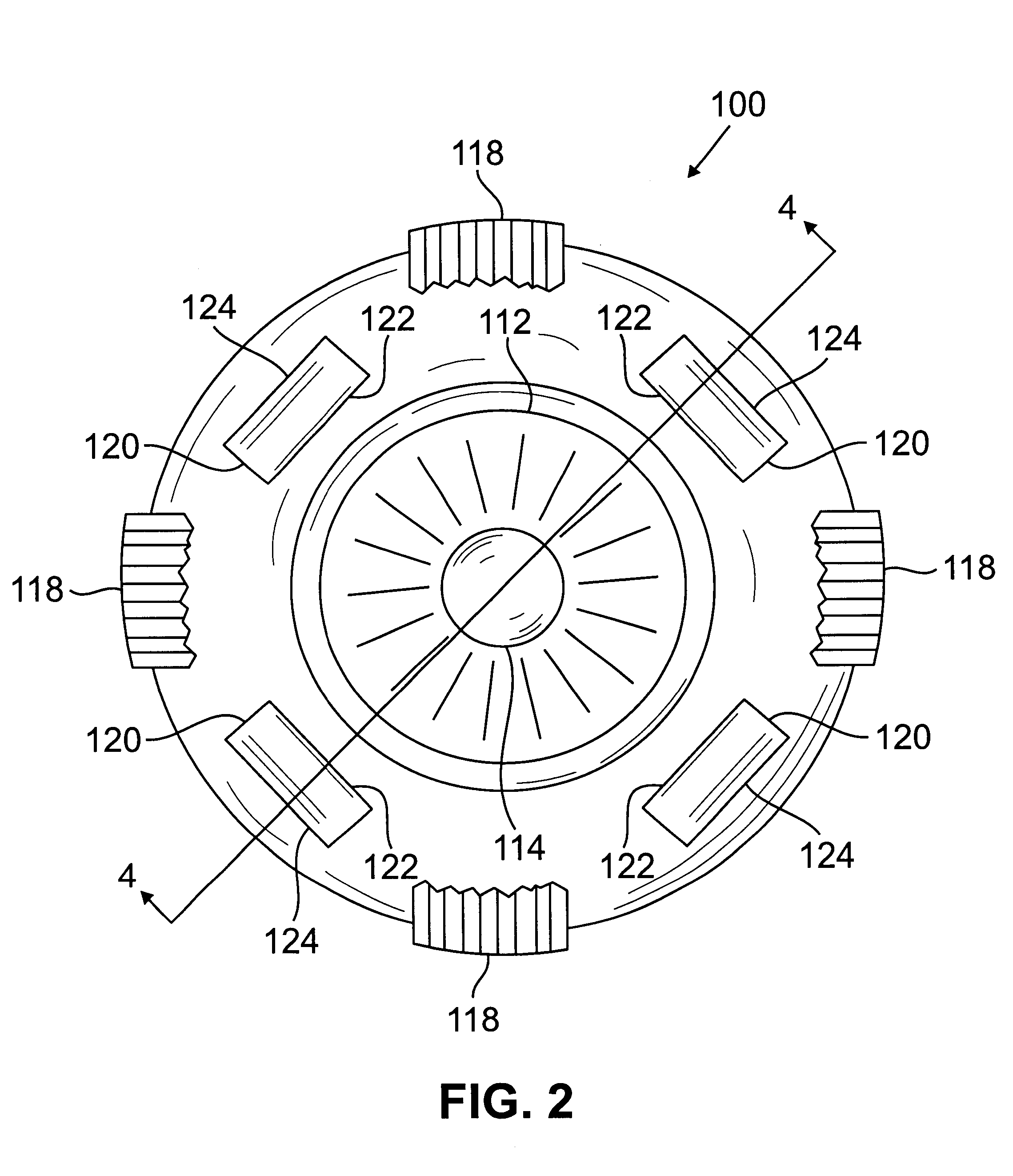Scleral prosthesis for treatment of presbyopia and other eye disorders
a technology of presbyopia and prosthesis, which is applied in the field of scleral prosthesis for treating presbyopia and other eye disorders, can solve the problems of not being able to restore not being able to adapt to the special needs of the prosthetic device used in treating presbyopia, and not being able to achieve the effect of restoring the accommodative power of the presbyopic ey
- Summary
- Abstract
- Description
- Claims
- Application Information
AI Technical Summary
Benefits of technology
Problems solved by technology
Method used
Image
Examples
first embodiment
the prosthesis of the invention is illustrated in FIGS. 6-8. FIG. 6 shows a plan view of the inner face of the prosthesis 200 having a base 202 with an anterior edge 204, a posterior edge 206, and lateral ends 208 and 210. The inner face 212 is provided with a ridge 214 extending along the length of the major dimension of the elongated base 202FIG. 7 shows a front elevational view of the prosthesis of FIG. 6 showing the flat, smooth outer surface 216 of the prosthesis. FIG. 8 shows a side view of the prosthesis showing the outer surface 216, the ridge 214 and a notch 218 on the inner surface 212 of the prosthesis.
FIGS. 9-10 illustrate a prosthesis of the invention having a curved planform adapted to be implanted in a scleral pocket that is curved to match the curvature of the eyeball. The prosthesis 300 of FIGS. 9-10 has a generally planar base 302, curved in the plane of the base 302, having an anterior edge 304, a posterior edge 306, and lateral ends 308 and 310. The inner face 31...
PUM
 Login to View More
Login to View More Abstract
Description
Claims
Application Information
 Login to View More
Login to View More - R&D
- Intellectual Property
- Life Sciences
- Materials
- Tech Scout
- Unparalleled Data Quality
- Higher Quality Content
- 60% Fewer Hallucinations
Browse by: Latest US Patents, China's latest patents, Technical Efficacy Thesaurus, Application Domain, Technology Topic, Popular Technical Reports.
© 2025 PatSnap. All rights reserved.Legal|Privacy policy|Modern Slavery Act Transparency Statement|Sitemap|About US| Contact US: help@patsnap.com



